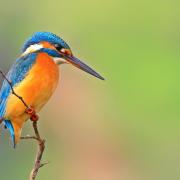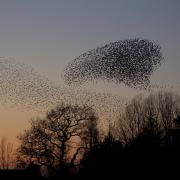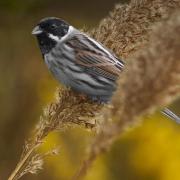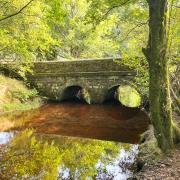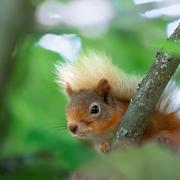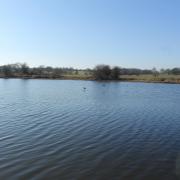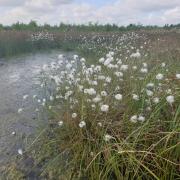Despite its bad reputation, the cuckoo has been a great and clever survivor in the wild. However, numbers have dipped since the 1970s. The Lancashire Wildlife Trust’s Alan Wright investigates this iconic spring bird.

In April last year, I was wandering along the path on Brinscall Moor close to Wheelton Plantation when I heard a cuckoo.
‘Cuckoo! Cuckoo!’ was plainly coming from a small copse of trees close to an area where stone or lead had been mined in the long past.
‘Cuckoo! Cuckoo!’ There is something that reminds you of ancient times when this bird begins to herald the coming of spring. This is a loud call to our wildlife to wake up and join in as the days get warmer.
‘Cuckoo! Cuckoo!’ It stopped, almost with a gulp as I approached its patch. Then I saw it. The cuckoo took off and headed into the dense conifers at the top end of the wooded area that rises out of Brinscall village.
I did get a good view of its striped underside, which can mean it is mistaken for a sparrowhawk. It was the first time I had ever seen a cuckoo and I was really excited.
A month or two later, photographs emerged of a young cuckoo at Brockholes, our reserve off the M6 at Preston. Taken by local birder Ged Gill, they were lovely to see. Yet those pictures told a story of deception and falsehoods, untimely death and a pair of small birds who had expected a tiny baby, but instead dealt with weeks of feeding and caring for a giant.

Cuckoos are brood parasites, which means they lay their eggs in a smaller bird’s nest and then fool the nest owners to look after them. The nests normally belong to dunnocks, meadow pipits or warblers. They do not notice an egg has joined their clutch.
Once the cuckoo’s egg has hatched, the fledgling will boot out other eggs and push any other young out of the nest. It then becomes the sole interest for adopted mum and dad’s feeding forays.
What has happened to cuckoo mum and dad? Why, they have flown back to Africa, around June or July, and are now sunning themselves waiting for the following spring to return to the UK with another egg.
This appears to be terrible behaviour but that is the natural world for you and the cuckoo should be a great survivor. As I mentioned before, stripy looks are another trick, fooling predators into thinking they are birds of prey.
Cuckoos are sometimes mistaken for sparrowhawks due to their markings – normally blue-grey but sometimes reddish-brown backs and heads with striped dark grey and white undersides. They have long tails and pointed wings and a hawk-like shape in flight.
So, really, we should see a lot more of them around and yet, according to the Lancashire Bird Atlas, the British population fell by 62 per cent between 1970 and 2010.

The decline of the cuckoo as a breeding species in Lancashire may be traced back at least as far as 1973. Birders in our region agreed that numbers had fallen and the present summer population is estimated at 100 pairs.
Like many birds relying on feeding on farmland and meadows, loss of habitat has hit them hard. In fact, it’s a double whammy if smaller birds numbers decrease then there are fewer nests for the cuckoo to steal into.
So we must support farmers and conservationists, who are working together to return some of our landscape to what it used to be. We need habitats where farmland birds can thrive again.
It would be a huge loss if the breeding season ‘cuckoo!’ suddenly vanished. After all, it only lasts a couple of months when the cuckoo loses its tune in June and opts for a song of descending notes.
Yes, this is a naughty bird but we do like a rogue and how would we know, in late February and early March, that spring is coming without cuckoos and their relatives the woodpeckers calling and knocking to welcome the warmth.
Get involved
The Wildlife Trust for Lancashire, Manchester and North Merseyside is dedicated to the protection and promotion of the wildlife in Lancashire, seven boroughs of Greater Manchester and four of Merseyside, all lying north of the River Mersey. It manages around 40 nature reserves and 20 Local Nature Reserves covering acres of woodland, wetland, upland and meadow. The Trust has 29,000 members, and over 1,200 volunteers.
To become a member of the Trust go to the website at www.lancswt.org.uk or call 01772 324129.












